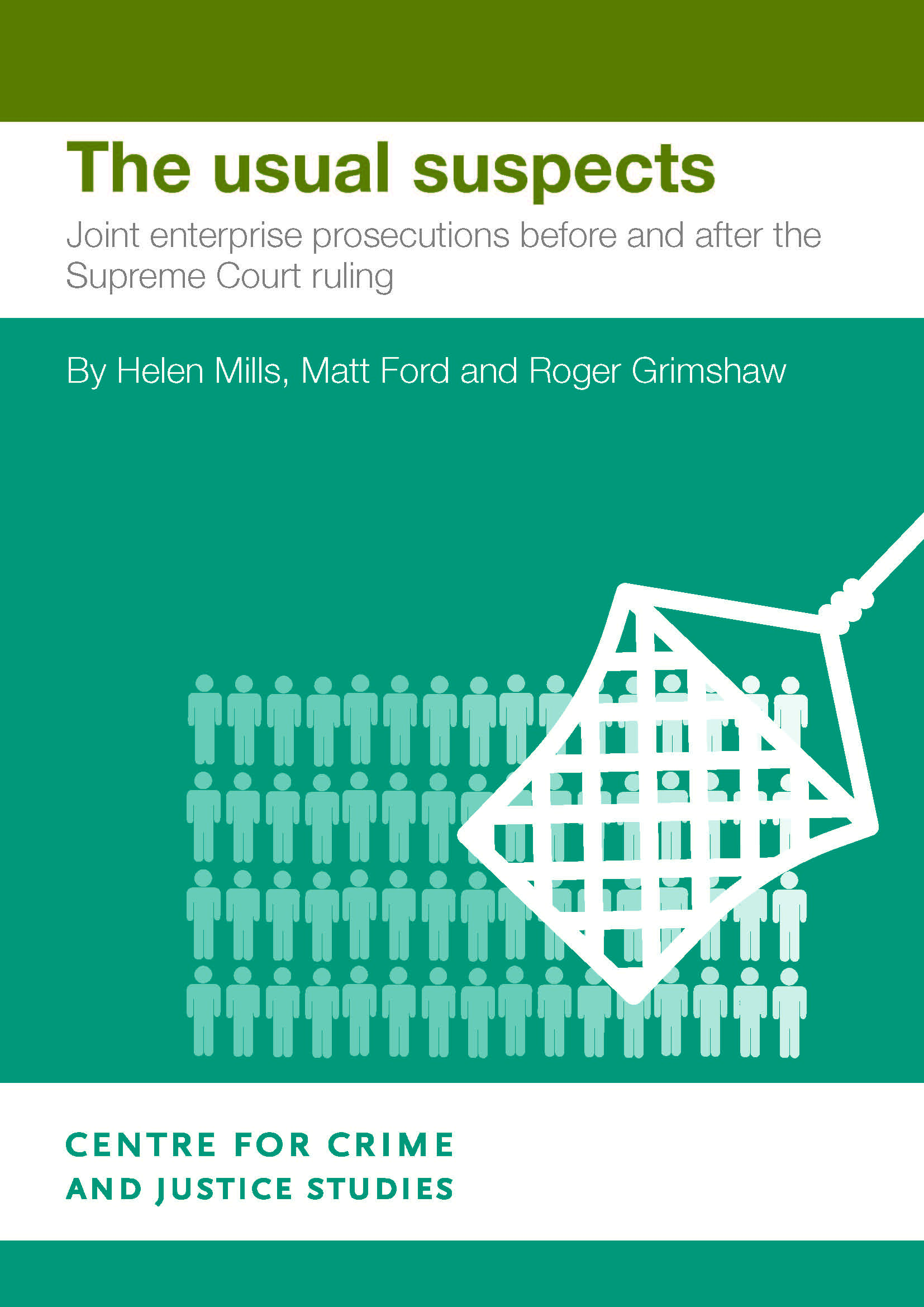The research in this new report – The usual suspects – was conducted by the Centre for Crime and Justice Studies, in partnership with the campaign group JENGbA.
Until the Supreme Court ruling, in February 2016, there were three ways that multiple people could be prosecuted for a single offence, under so-called joint enterprise principles. First, if two people jointly committed a single crime, and, second, if one or more people actively assisted or encouraged someone else to commit a crime.
The third way, known as ‘parasitic accessory liability’, involved cases in which two or more people committed a crime, during which one of them committed another crime. Under parasitic accessory liability, the others could be prosecuted as secondary suspects, on the basis that they should have foreseen that the primary suspect would commit another crime. In 2016, the Supreme Court ruled that this third approach – parasitic accessory liability – had been wrongly applied, setting far too low a bar for individuals to be convicted of offences they did not perpetrate.
To explore the possible impact of this ruling, researchers at the Centre for Crime and Justice reviewed prosecutions and convictions of secondary suspects for murder and manslaughter, and multi-defendant cases for homicide.
For murder and manslaughter:
- In three years leading up to the Supreme Court ruling – 2013/14 to 2015/16 – the researchers identified 522 individuals charged as secondary suspects and 296 convictions of secondary suspects.
- In the three years following the ruling – 2016/17 to 2018/19 – researchers identified 547 individuals charged as secondary suspects and 326 convictions of secondary suspects.
There was therefore no discernible impact on the number of prosecutions and convictions.
The researchers also looked at the age, ethnicity and other characteristics of defendants. A clear profile emerges about who has been convicted of serious violent offences through joint enterprise laws. They are predominately young men. Those from minority ethnicity communities, particularly the Black community, are consistently over represented. Indeed, there are indications that the most recent period has seen some increase in ethnic disproportionality among those convicted under joint enterprise rules.
Among its recommendations, the report is calling for Crown Prosecution Service to commit to proper data collection, and to undertake a retrospective review of joint enterprise prosecutions. It also calls for the House of Commons Justice Committee to undertake an Inquiry into the application of the joint enterprise rules.
The findings come at a time of renewed campaigning around the impact of joint enterprise on prisoners and their families. Those convicted prior to the 2016 Supreme Court ruling face enormous obstacles to challenging their convictions. This has led JENGbA to propose a change in the law, through a Private Member’s Bill, to make it easier for successful appeals to be mounted.
Speaking today, Helen Mills, Head of Programmes at the Centre for Crime and Justice Studies and one of the report authors, said:
The Supreme Court ruling could not have simply resolved the well-established injustices of joint enterprise. But we were surprised at how consistent the number of prosecutions and convictions secured through joint enterprise were throughout the fifteen-year period we looked at. Before and after the Supreme Court ruling, numbers of prosecutions through joint enterprise laws were remarkably similar, suggesting not much has changed.
Currently there is no official record about the use of joint enterprise. In the absence of better data collection, these figures are our best guide to gauging trends about how this complex and problematic area of law is working. While we did the best we could to establish the most accurate picture, our work also strengthens the argument for greater transparency about this controversial area of prosecution policy.
Gloria Morrison, of JENGbA, said:
The Supreme Court victory in 2016 vindicated everything JENGbA had said for many years. This victory was bittersweet because we have found that those convicted under the wrong interpretation of the law now find themselves with the impossible hurdle of the Substantial Injustice Test.
Jan Cunliffe, of JENGbA, added:
JENGbA campaigners did originally take comfort from the fact that the daily trauma they continued to face, would never happen to another family. However, these findings come as no surprise to us. We receive calls from distressed family members on an almost weekly basis. Their confusion and disappointment in the criminal justice system is a harrowing reminder of the urgent need for Parliamentarians to step in and put right the draconian measures that are continuing to destroying the lives of so many.
Richard Garside, Director of the Centre for Crime and Justice Studies, said:
I remember the 2016 Supreme Court ruling well, and the hope among campaigners that it would be a real turning point. We need our research to be confirmed by future pieces of work, but it suggests that meaningful reform to the controversial joint enterprise rules is desperately needed.
Parliament is in a position to address what could be a substantial injustice in the way joint enterprise rules continue to be applied. As a first step, we think it would be positive step for the House of Commons Justice Committee to undertake an Inquiry into joint enterprise.

